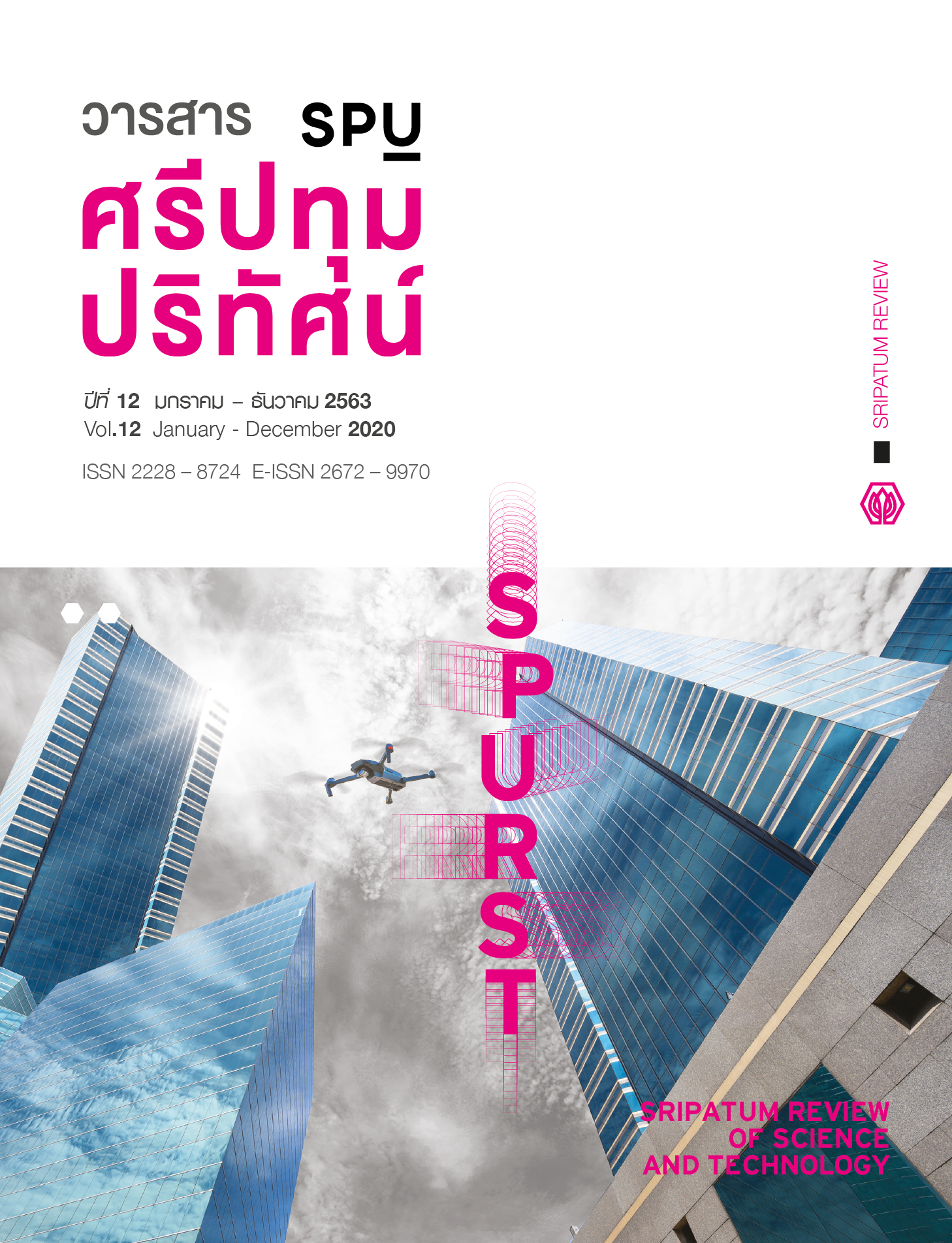The investigate of White and Black Lines Defect for Hot Extrusion Die Process of Hollow Aluminum Profiles by Finite Element Method
Main Article Content
Abstract
The black and white lines defect in the aluminum extruded profile is one of the problems that lead to the reject of the product by the customers, especially after it has been treated with the anodized procedure. This research experimented with three methods to reduce the black and white lines defect by using the finite element method (FEM) and adjusting three ways of the profile layout, namely, the original parallel (0 degrees angle) layout, the 22.5 degrees angle layout, and the 45 degrees angle layout. The results from FEM show that the heat accumulation occurs in the axis zone of the die in the 0 degree die layout, which will decrease when the layout is adjusted in increasing angles. The extrusion experiment shows a good result for die layout of 45-degree angle which can reduce the defect from 50 percent to 4 percent, resulting in high level of reducing waste product in the production process.
Article Details
References
A.F.M. Arif, A. K., Sheikh, S.Z., Qamar, M.K., Raza, K.M.and Al-Fuhaid (2002). Product defects in aluminum extrusion and its impact on operational cost. The Proceedings of the 6th Saudi Engineering Conference,14-17 December 2002 at Dhahran, 137-154.
Gang, F., Jie, Z., Jurek, D. (2009) FEM simulation of aluminium extrusion through two-hole multi-step pocket dies. Journal of Materials Processing Technology, 209, 1891–1900.
Khansai, K. (2013). Die live Improvement for Hot Extrusion Process by Using Geometrical Approach. Thesis of the Degree of Master of Production Engineering. Bangkok: King Mongkut’s University of Technology North Bangkok. (in Thai)
Li, G. J., Yang, J. Y., Oh, M. Foster, W. Wu, P., Tsai et al. (2009) Advancements of extrusion simulation in DEFORM-3D. The Proceedings of the International Conference on Extrusion and Benchmark, September 16-17, 2009, at Dortmund, Germany, SFTC paper#422.
Prachprayoon, P., Decjarern, S. and Carmai, J. (2007). Extrusion die design using finite element method. The Proceedings of the 21st Conference of Mechanical Engineering Network of Thailand, 17-19 October 2006 at Chon Buri, 959-962. (in thai)
Pholsongkerah, Y. and Sujinda, C. (2015). A study to determine optimal thickness for reinforced concrete flat slab using 3D plate finite element using CSI SAFE program. Sripatum Review of Science and Technology, 7, 39-46. (in Thai)
Sriprapai, D. (2001). The study of flow stress for AA 6063 aluminum alloy at elevated temperature. The Proceedings of the 39th Kasetsart University annual Conference, 5-7 February 2001 at King Mongkut’s University of Technology Thonburi, 359-365. (in Thai)
Xingshengsteel. (2018). AISI H13 I 1.2344 I SKD 61. [Online]. Retrieved October 11, 2019, from: http://www.round-bars.com/products/h13-skd61-hot-work-tool-steel/.
Zhi-hao, Z., Wen-rong, H., Dong-nan, H. and Jian-xin, X. (2012). Mesh Reconstruction Technology of Welding Process in 3D FEM Simulation of Porthole Extrusion and Its Application. Procedia Engineering, 36, 253–260.


